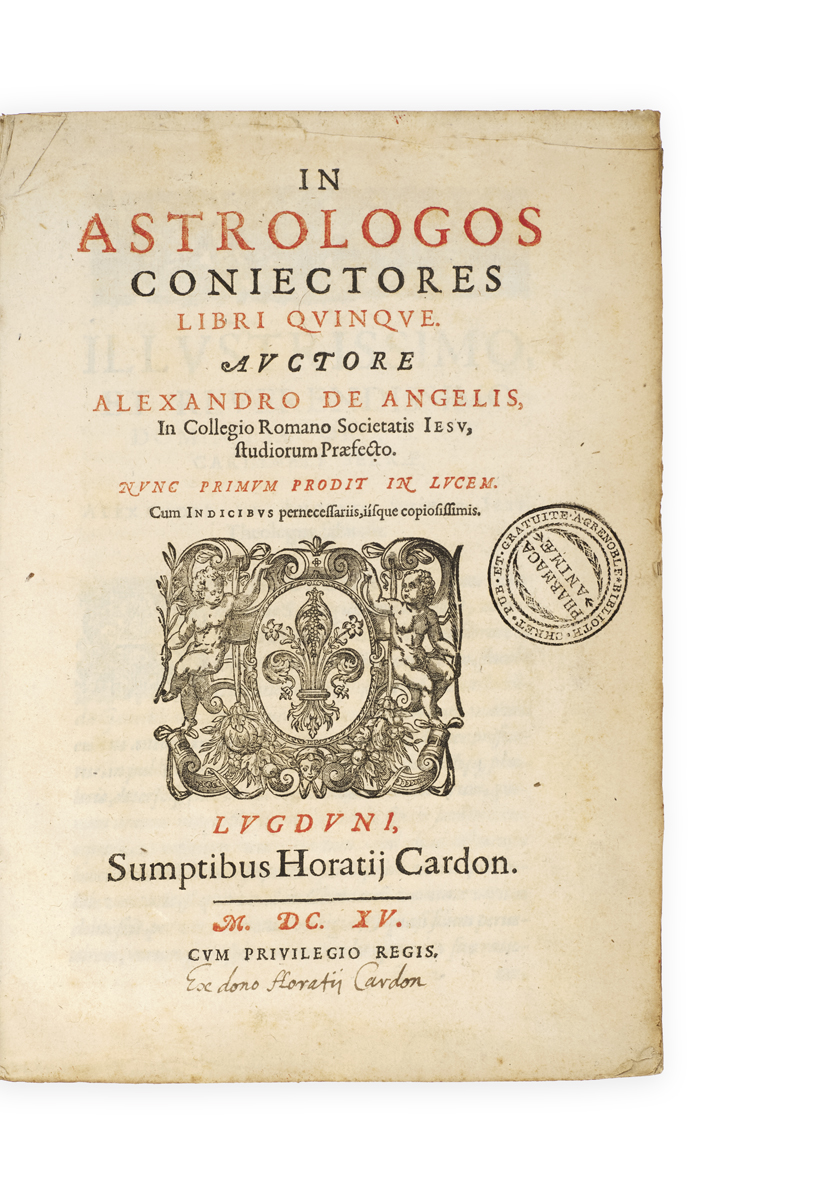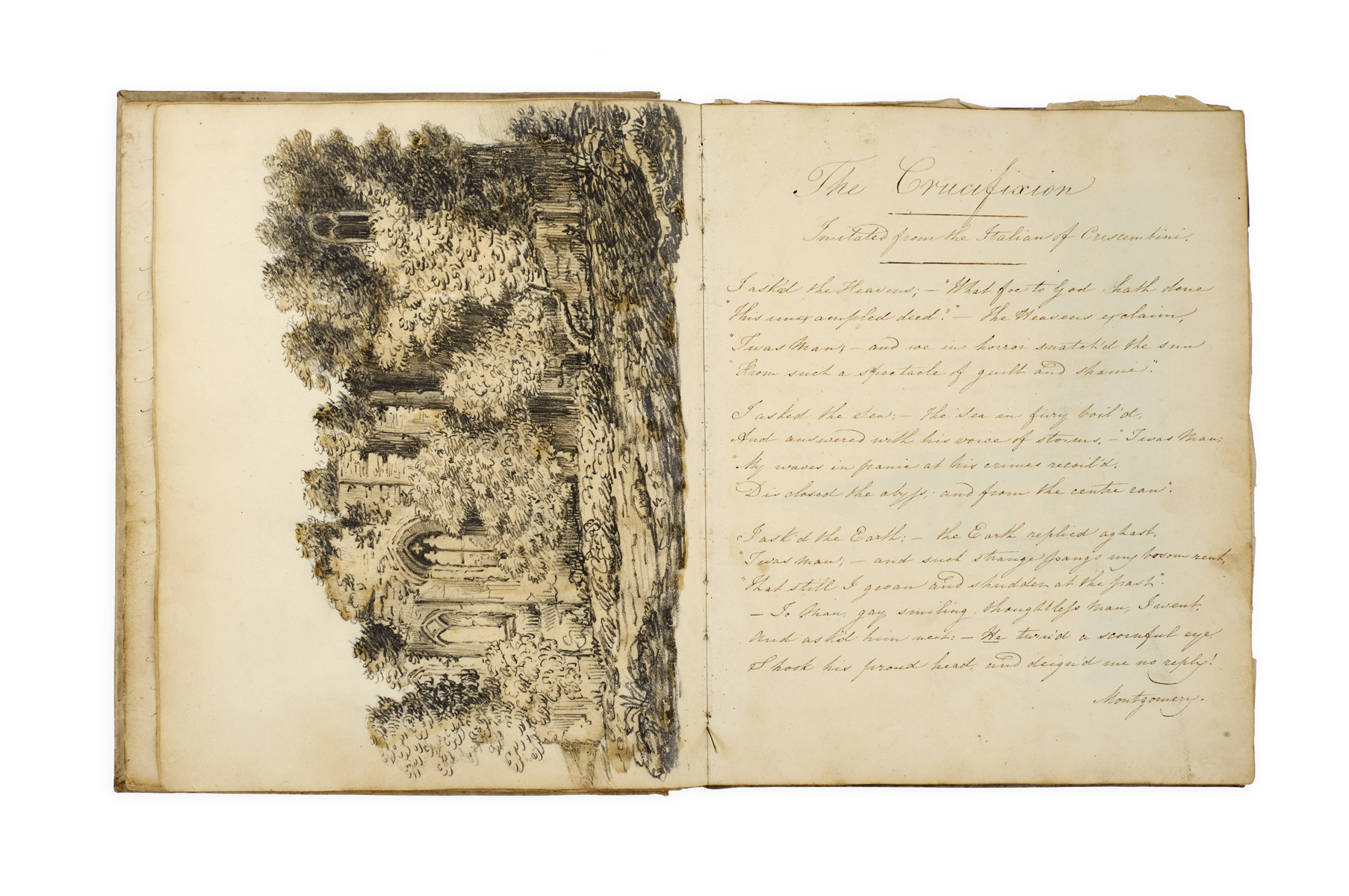
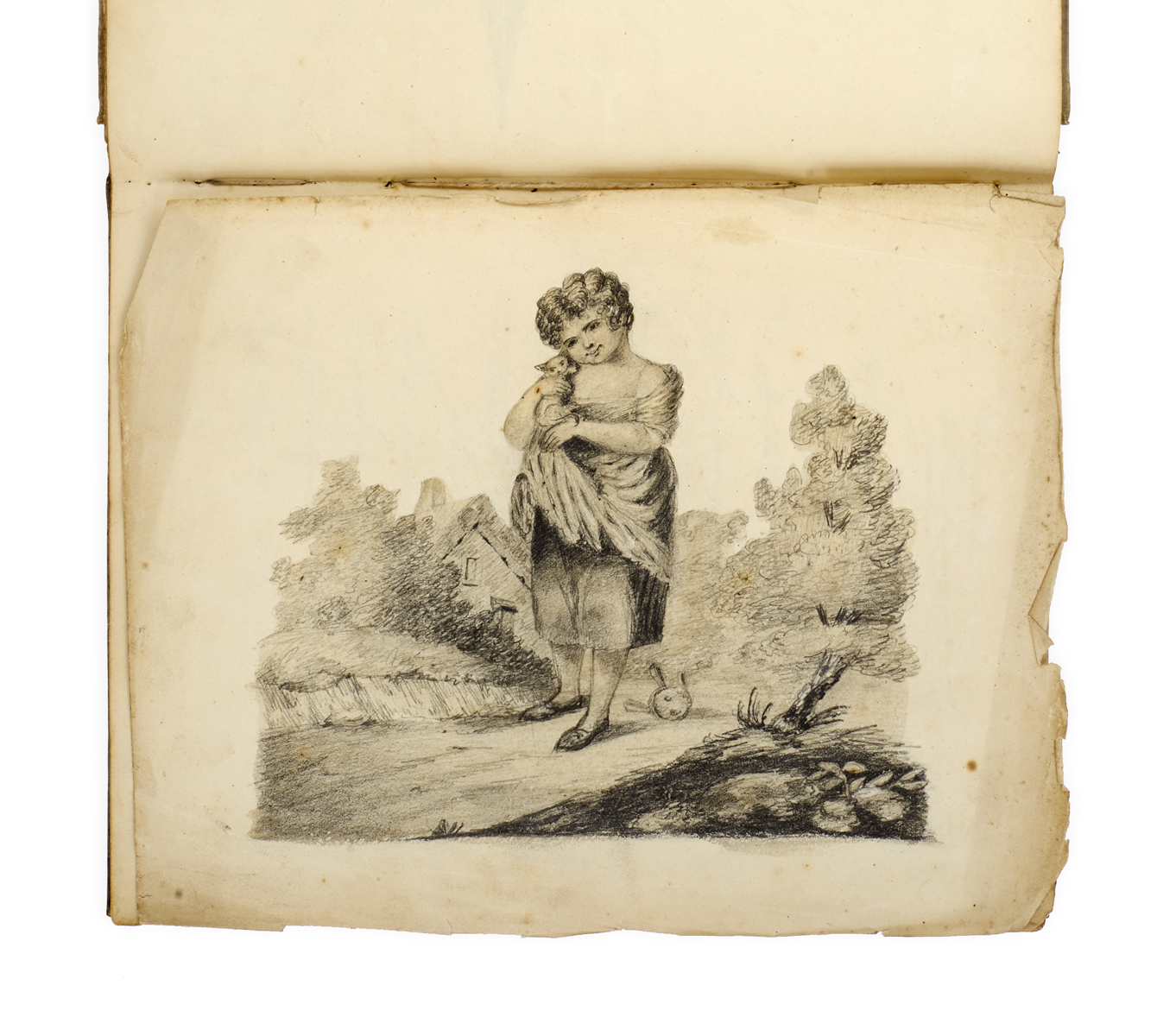
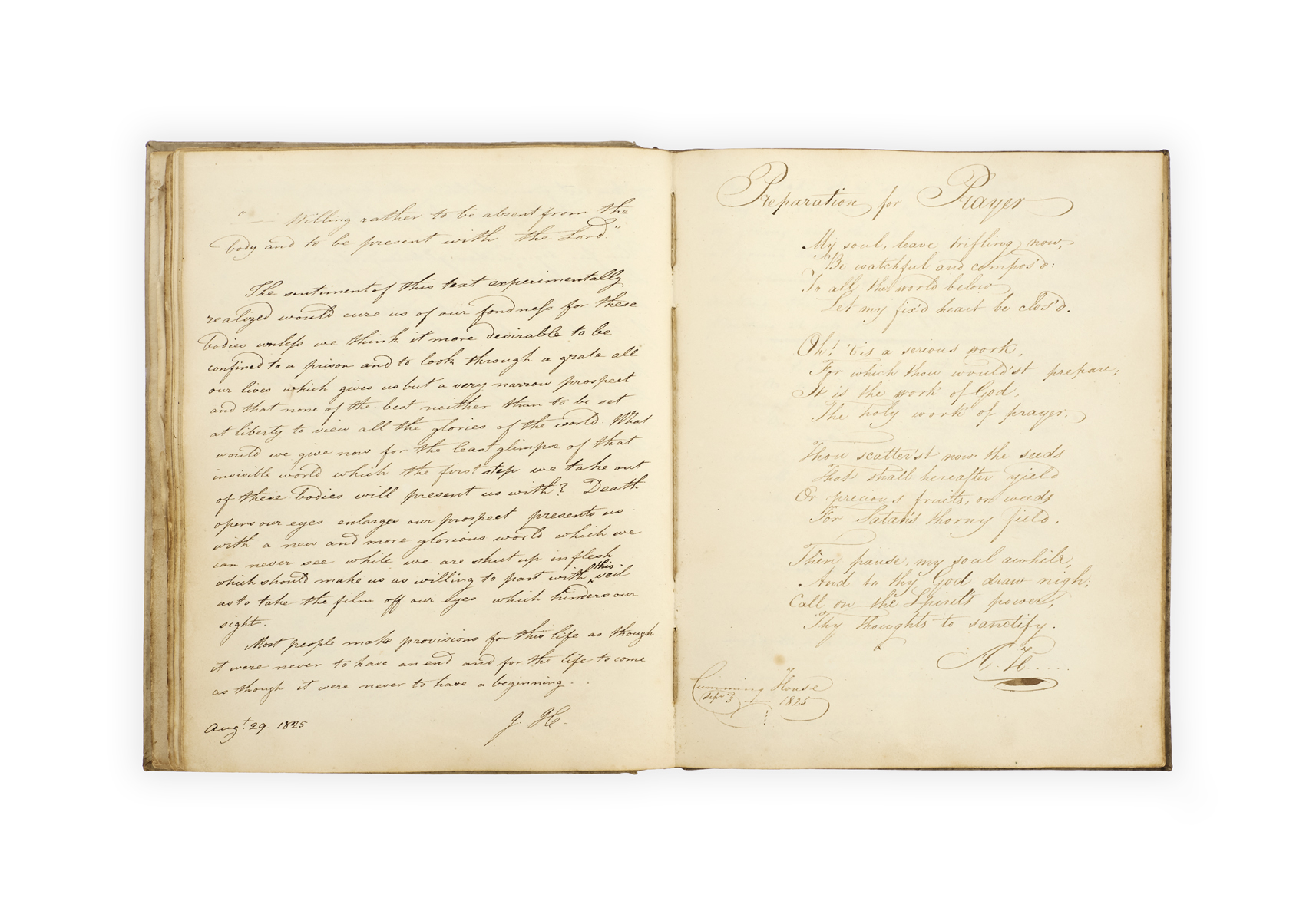
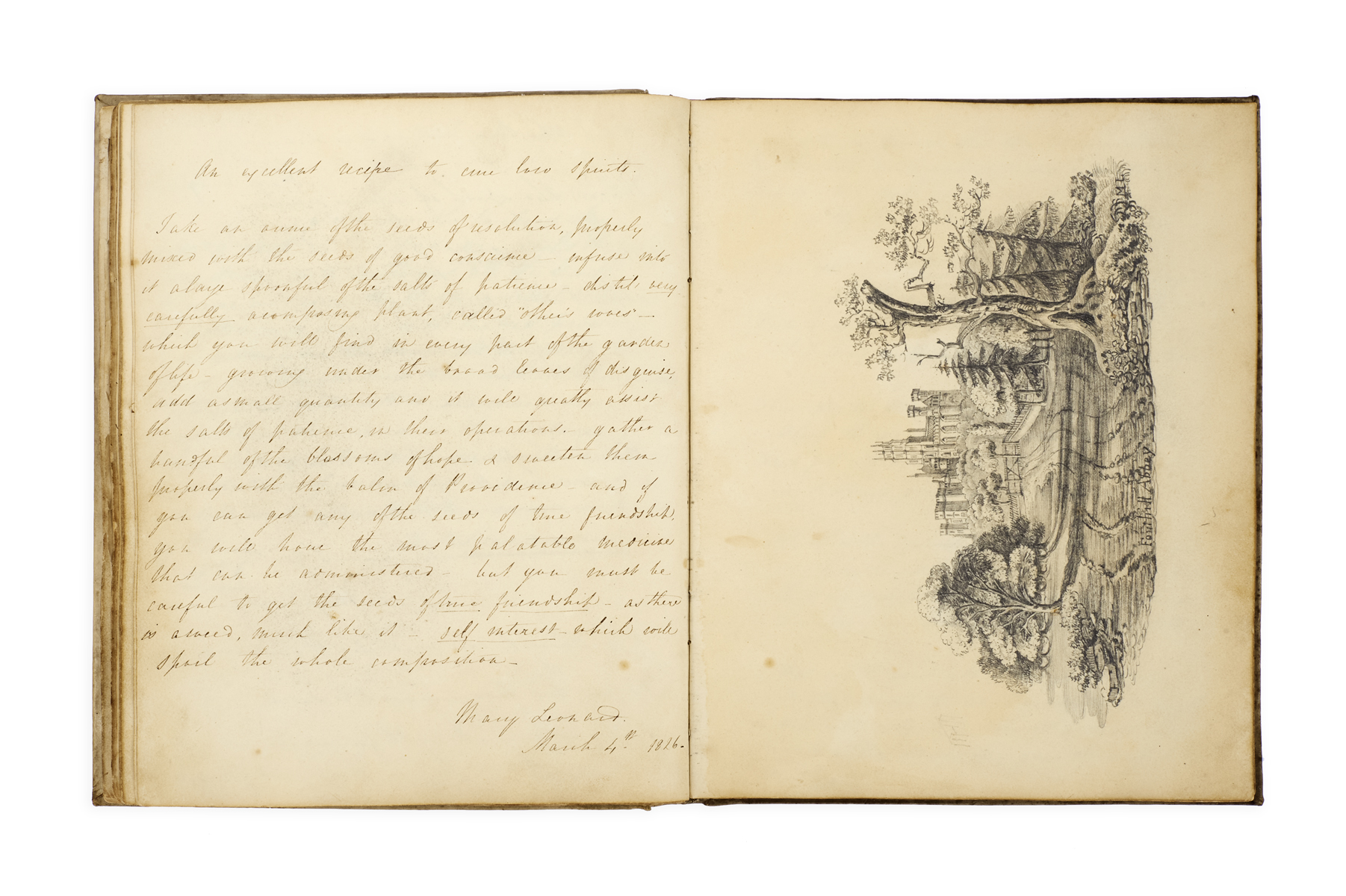
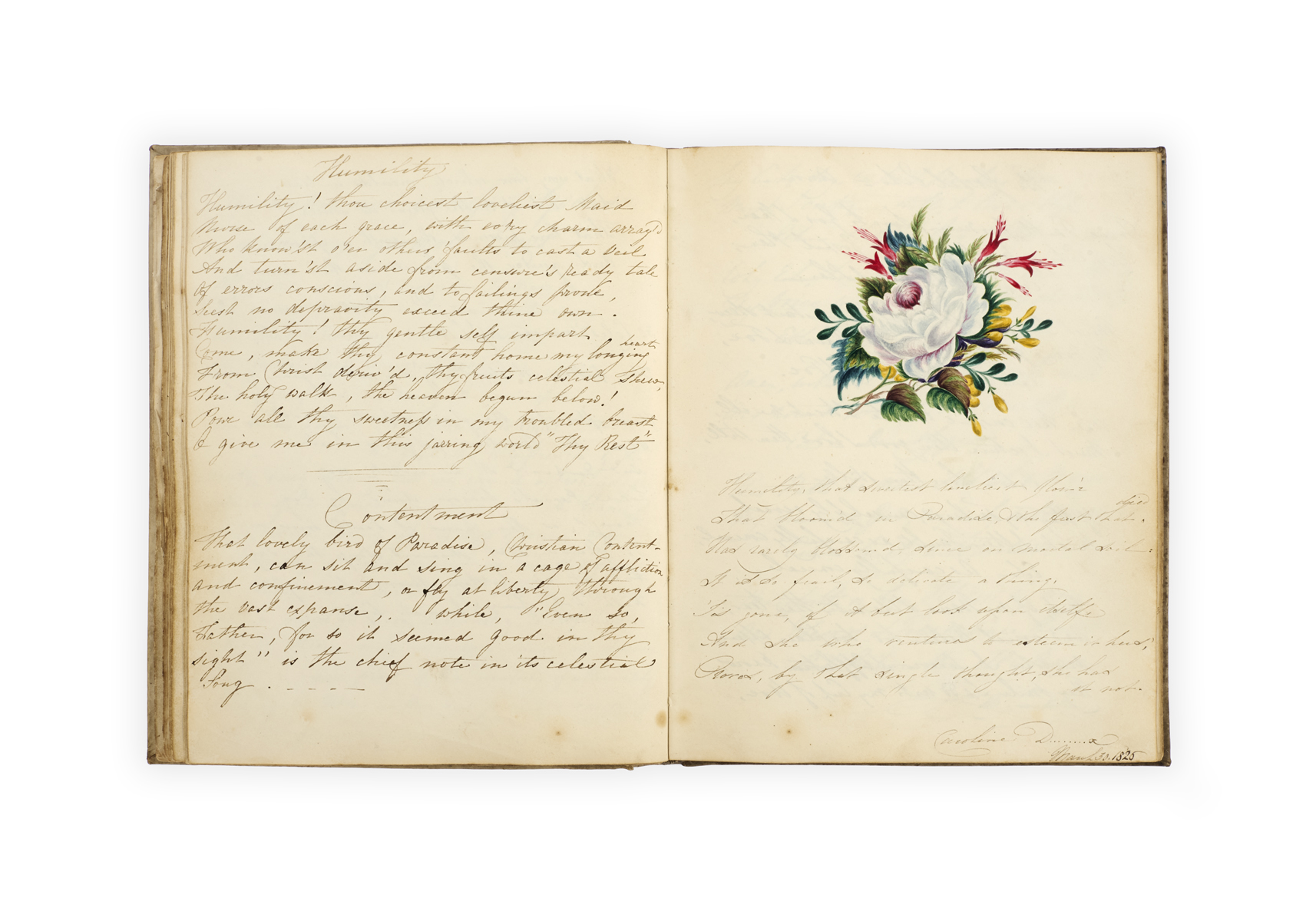
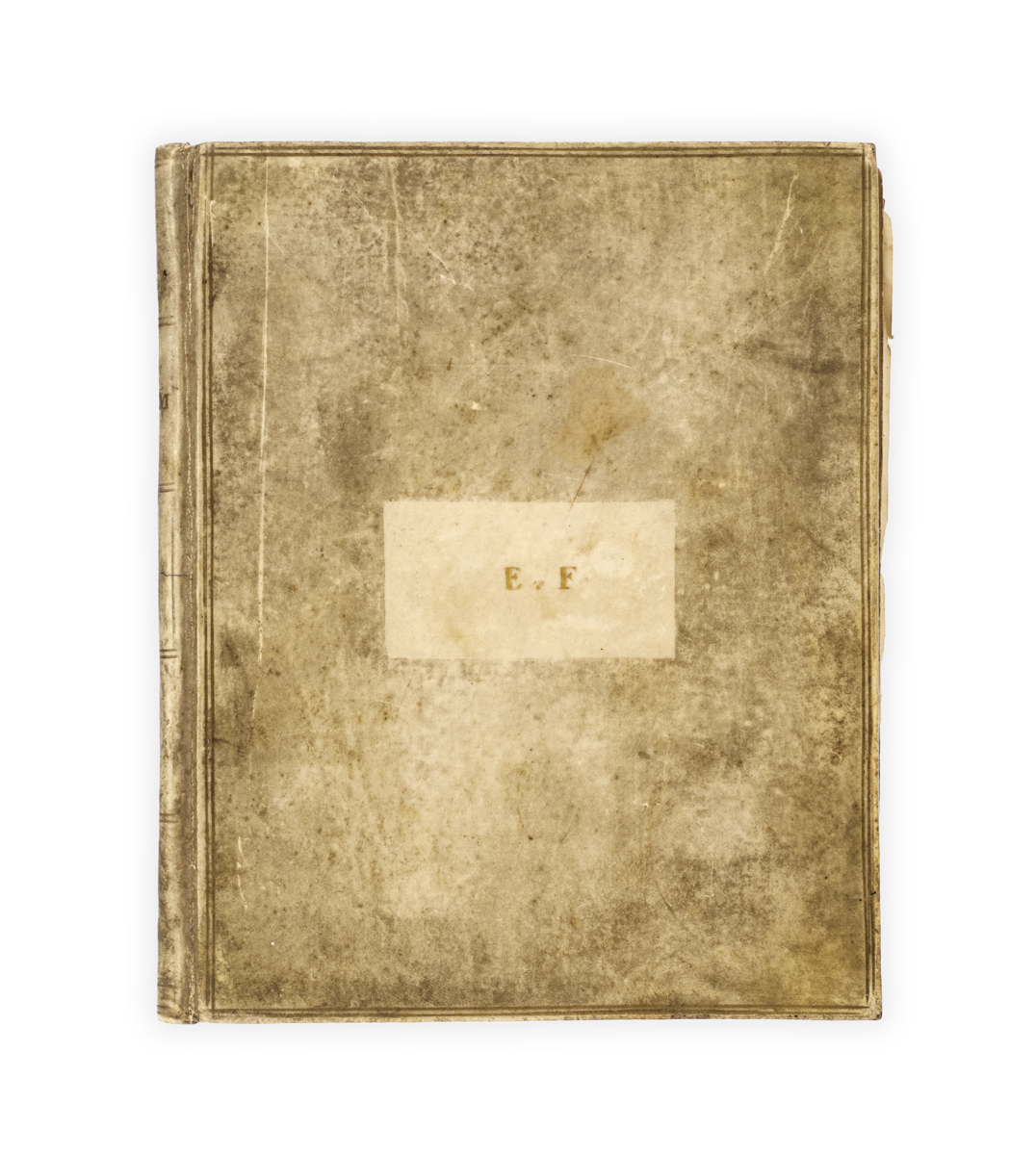
NONCONFORMIST FRIENDSHIP ALBUM
[FRIENDSHIP ALBUM.]
Album of poetry and prose with watercolour illustrations.
[London, c. 1824–1832.]
Manuscript on paper watermarked ‘Gater 1822’, in English, 4to, pp. [114] + 50 blanks; comprising manuscript poetry, watercolour, and pencil sketches, elegantly written in several hands in dark brown, green, and lilac ink, floral watercolour border to first poem, two watercolour illustrations (one of which mounted), two pencil sketches; well-preserved with occasional faint spotting and light marginal toning, a few marginal stains to endpapers; bound in contemporary vellum, borders filleted in gilt, ‘E.F.’ gilt directly to upper board, edges gilt; upper joint cracked but holding well, soiling to upper cover, boards a little bowed; numerous contemporary attributions throughout (see below).
An attractive nineteenth-century album collecting poems (many of Scottish, Irish, and Nonconformist interest) and hymns, along with several charming drawings in pencil and ink, with ties to several London families.
The contents of the album display a notable penchant for the work of late eighteenth- and early nineteenth-century Scots and Irish poets: several of the contributors have copied works by Scottish poet and hymn writer James Montgomery (1771−1854), including ‘Lines addressed to Mr Bennet on his visit to the South Sea Islands’, ‘What is Life?’, and ‘The Crucifixion’. Lalla Rookh, by Irish poet Thomas Moore (1779−1852) seems to have been similarly admired, with three separate excerpts from the poem. Other examples include Burns’s Tam o’Shanter, Thomas Campbell’s Pleasure of Hope, and one of Moore’s most popular Irish Melodies, ‘The Last Rose of Summer’. The collection comprises several pieces relating to English dissenters. Reverend John Blackburn (1791−1855), minister at the Claremont Chapel, Pentonville Road, London, appears to have excerpted a poem, ‘The Deceitful Halo’, from the Congregational Magazine, of which he was the editor from 1818 to 1845, signing with his name and ‘Pentonville / Sept 15. 1825’. Another contributor, ‘L. Habbard’, has included a hymn, ‘Come let us join our cheerful song’, presented by a young woman to ‘The Clark of a Dissenting Chapel in Birmingham’.
The work of various female poets likewise appears throughout, notably that of Susanna Blamire (1747–1794), known as the Muse of Cumberland for her regional songs and poetry (‘When the soft tear steals silently down from the eye’) and Jane Taylor (1783 –1824), poet and novelist best known for the lyrics of ‘Twinkle, Twinkle, Little Star’ (‘The Philosopher’s Scales’). Much of the writing probably derives from contemporary literary miscellanies or periodicals, as in the case of Robert Pollok (1798−1827), whose ‘Course of Time’ was published by Mr Blackwood, early in 1827, and hymnaries. Several poems, however, appear to be original, including a female-authored occasional poem ‘On the death of the Revd J Spencer by Martha Hamilton.’
Sketches display views from King’s Norton Chapel, Worcester, and the Gothic Fonthill Abbey, Wiltshire.
Provenance: The album appears to have associations with several families in London, perhaps connected through religious ties. Locations identified include Camberwell, Pentonville, Coles Terrace (Islington), and Mornington Crescent. Many works are signed, revealing the variety of hands through which this collection passed, including several women (Eliza Vernon, Mary Leonard, Mary Roe). Family connections can also be traced throughout the book: the additions of Timothy Wallington (1783−1837), a sketch of King’s Norton Chapel, and a ‘Christmas Ode’, are followed by a poem by Dryden, ‘Lines on our Saviour’s Miracle’, copied by Wallington’s son, William Blackall Wallington (1813−1883). A brother and sister can also be identified: Caroline Desormeaux (1797−1880) of Spitalfields and her brother Daniel Desormeaux (c. 1783−1844), a chemist in White Conduit Fields, Islington, who five years after copying the poem ‘That very law which moulds a tear’ would be declared bankrupt in the New Monthly Magazine (1831) (p. 144).
